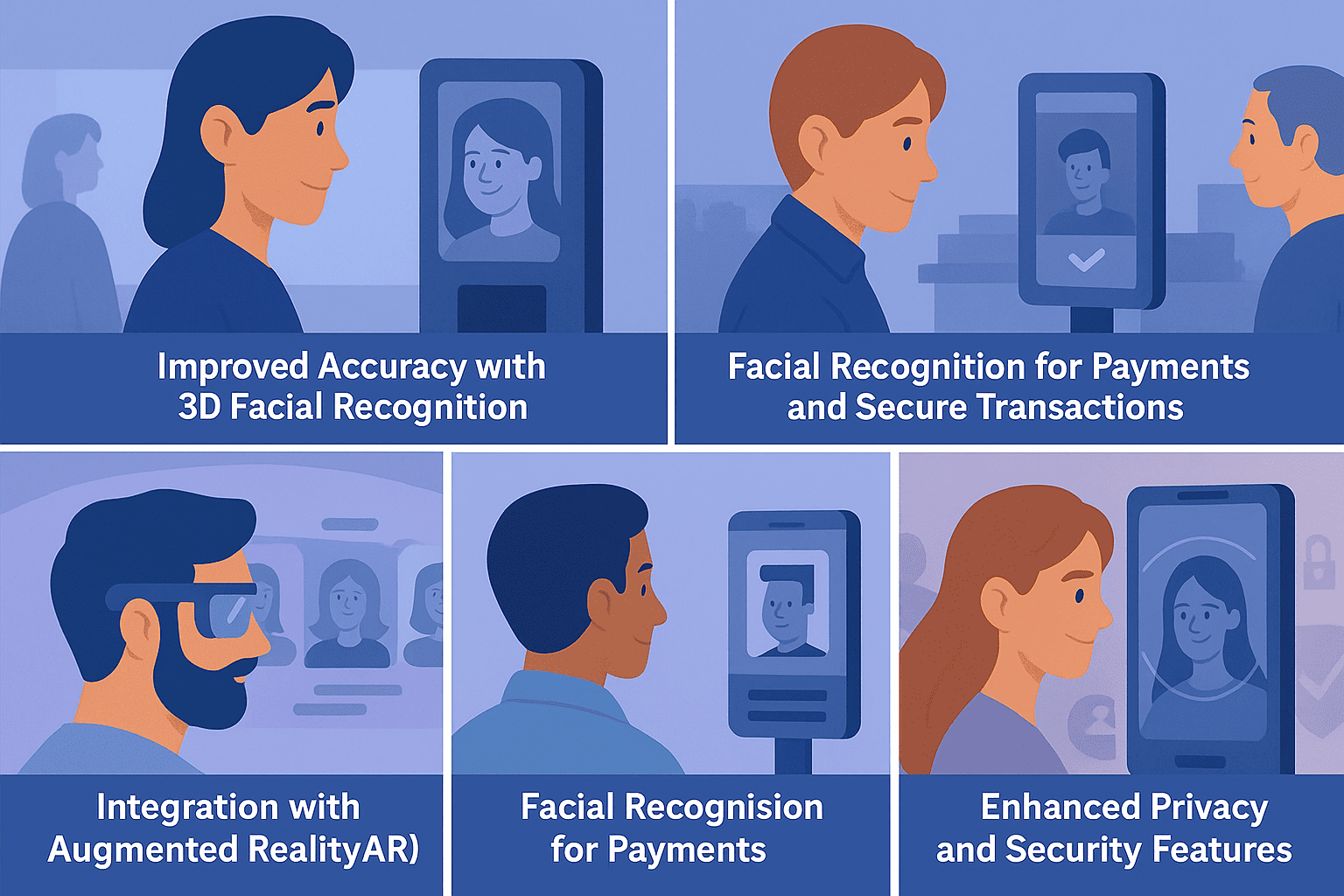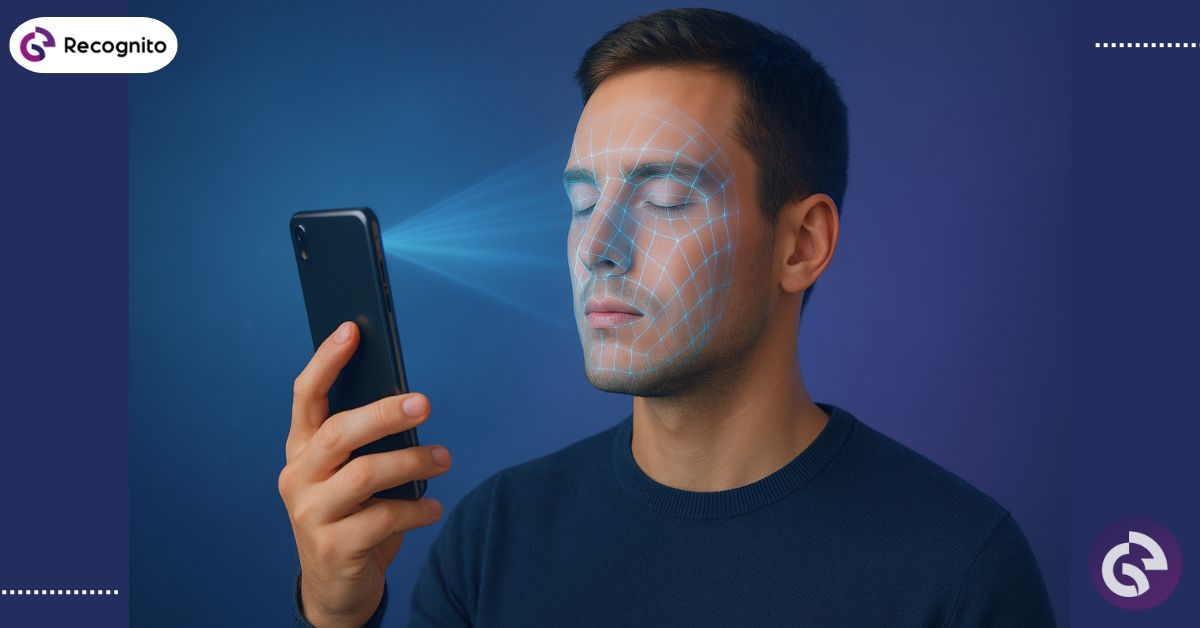Face ID search technology has rapidly evolved, becoming a standard feature in smartphones. In 2025, its capabilities are expected to expand even further, offering a seamless, secure, and personalized experience for users. This blog explores the future of Face ID search in smartphones, how it integrates with existing technology, and the potential benefits and challenges of this advancement.
What is Face ID Search?
It is a technology that uses facial recognition to unlock smartphones and enable various features such as security, payments, and app access. Unlike traditional password systems, it allows users to unlock their devices by simply looking at them, using the unique features of their faces as identification.
This technology has come a long way since its inception and continues to evolve with advancements in 3D facial recognition and other biometrics. By 2025, Face ID will likely be even more accurate, efficient, and secure.
How Facial ID Recognition Works
It relies on advanced facial recognition algorithms and hardware, such as depth sensors, infrared cameras, and AI-powered software. It captures the unique features of a person’s face, including the distance between their eyes, nose, mouth, and other defining characteristics.
In the case of smartphones, Face ID works by:
- Scanning your face using a 3D depth sensor to create a detailed map of your features.
- Comparing the scanned data to the stored template to confirm your identity.
- Unlocking the device or allowing access to apps, payment systems, and more once the match is confirmed.
This process is both fast and secure, offering a more convenient method of authentication compared to traditional PIN codes or passwords.
The Future of Face ID Search in Smartphones (2025)
As we look toward the future of smartphones, Face recognition is set to play an even more central role. Here are some expected advancements:
1. Improved Accuracy with 3D Facial Recognition
Currently, Face ID systems rely on 2D mapping and some 3D depth sensors for better security. However, by 2025, 3D facial recognition will likely become the standard for even more accurate and precise identification. With the integration of advanced 3D facial recognition, your smartphone will be able to detect your face from multiple angles, providing enhanced security and reducing the risk of errors in recognition.
2. More Personalized User Experience
It will move beyond just unlocking your phone. By 2025, smartphones will likely offer a personalized user experience based on facial recognition. For instance, Face ID search could automatically:
- Adjust screen brightness or display settings based on your face.
- Personalize app suggestions or content based on your past preferences.
- Unlock specific apps and features automatically when the phone detects that you are looking at it.
This level of personalization can enhance user engagement and make smartphone interactions more intuitive.
3. Facial Recognition for Payments and Secure Transactions
Already, smartphones with Face ID capabilities allow users to make payments through mobile wallets like Apple Pay or Google Pay. By 2025, face unlock for payments will become even more common and secure. We may see Face ID search systems that can perform secure transactions, even without the need for an additional password or PIN. This will make financial transactions quicker and more secure for users.
4. Integration with Augmented Reality (AR)
Augmented reality is quickly gaining popularity, and Face ID search will likely integrate seamlessly with AR experiences. Imagine using your smartphone’s facial recognition to control AR experiences unlocking virtual environments, personalizing characters, and interacting with digital content. 3D facial recognition will provide accurate data to ensure a more immersive experience, enabling personalized AR interactions based on your facial features.
5. Enhanced Privacy and Security Features
With the growing concern over digital privacy, the future of Face ID search will focus on enhancing security measures. Face unlock technology will be enhanced to ensure that it is more difficult for people to bypass the system. Expect additional layers of security such as liveness detection, where the phone can determine if it’s looking at a real face (not a photo or video), or multi-factor authentication (combining face recognition with voice or fingerprint authentication).

Its Impact on the Smartphone Industry
The introduction of Face ID is already changing the way we interact with our smartphones. By 2025, it will likely have a profound impact on various industries:
1. Mobile Payments and E-Commerce
As smartphones adopt Face ID search technology, mobile payment and e-commerce platforms will see an uptick in secure transactions. Users will no longer need to fumble with passwords, credit cards, or PINs. Just a glance at their phone will be enough to authorize payments, making online shopping and in-store purchases more efficient.
2. Smartphone Security
Smartphone security will continue to evolve. With improved facial recognition technology, phone manufacturers will likely be able to deliver a much higher level of security. This could reduce the likelihood of data theft and unauthorized access, making smartphones much more secure.
3. Privacy Concerns
As Face ID search becomes more widespread, privacy concerns are likely to rise. Many people worry about the potential for their facial data to be stored and misused. The smartphone industry will need to address these concerns by implementing stronger encryption and giving users control over their data.
Challenges and Concerns in the Future of Face ID Search
While Face ID search has many advantages, it does come with its challenges:
1. Privacy and Security Risks
Storing and using facial data raises privacy concerns. If this data is hacked or stolen, it could lead to identity theft. To combat these risks, manufacturers will need to adopt robust encryption and make sure that personal data is stored securely.
2. Facial Recognition Accuracy
While facial recognition technology has improved, it’s still not flawless. Factors such as lighting, aging, or facial hair changes can affect recognition. As we move toward 2025, more accurate 3D facial recognition systems will likely emerge to minimize these issues.
3. Increased Dependency on Facial Recognition
As more tasks are tied to Face ID search, users may become overly reliant on facial recognition for security. This could present issues if the system fails or the user’s facial features change significantly due to injury or surgery.
Conclusion
The future of Face ID search in smartphones looks promising. By 2025, it will be more accurate, secure, and integrated with other technologies, enhancing the user experience and providing improved functionality. Whether for security, payments, or personalization, Face ID search will be a key player in how we interact with our smartphones.
If you’re a business or developer interested in incorporating facial recognition technology into your app, tools like Recognito’s Face ID SDK can help. Tested under the NIST FRVT 1:1 case study, it delivers reliable performance while prioritizing both security and privacy. Recognito offers robust, easy-to-integrate solutions for adding face unlock features into your products. To learn more and explore the implementation, you can also visit Recognito’s GitHub repository.
The future is looking brighter with Face ID search, but it’s essential to address privacy, accuracy, and security concerns as the technology continues to evolve.
Frequently Asked Questions
1) What is Face ID search, and how does it work?
Face ID search uses facial recognition technology to unlock your smartphone by scanning unique facial features and matching them to a stored template.
2) Is Face ID search more secure than traditional passwords?
Yes, Face ID search is more secure as it uses biometric data, which is harder to guess or steal compared to traditional passwords.
3) Can Face ID search be fooled by photos or videos?
Modern Face ID systems use liveness detection, making it difficult for photos or videos to fool the system.
4) What happens if Face ID search doesn’t recognize my face?
If Face ID fails, you can unlock your device with an alternative method like a password, PIN, or fingerprint.
5) Will Face ID search work if my face changes significantly (e.g., due to aging, makeup, or injury)?
Face ID can adapt to minor changes but might struggle with significant changes like severe injuries or drastic aging.

